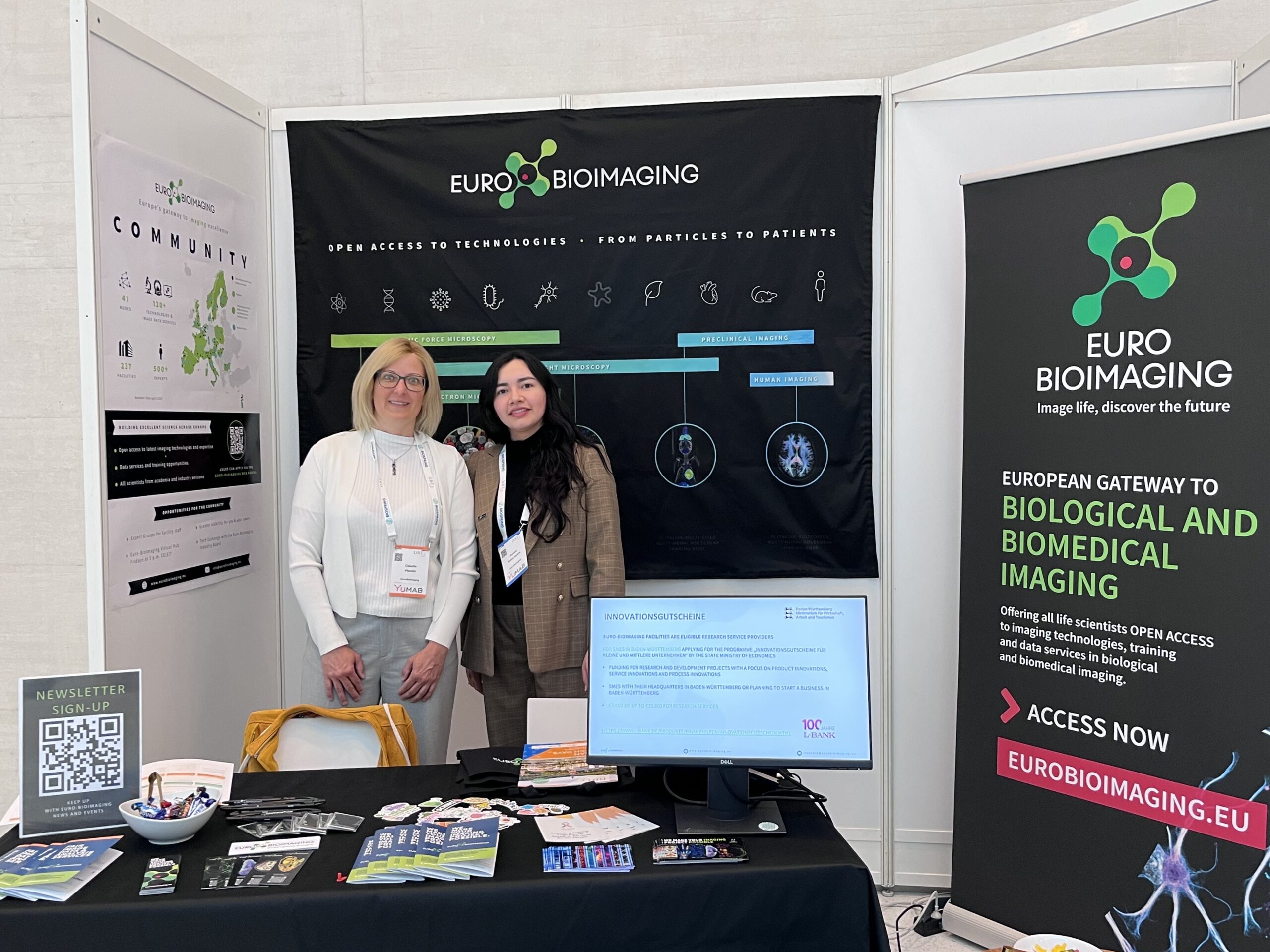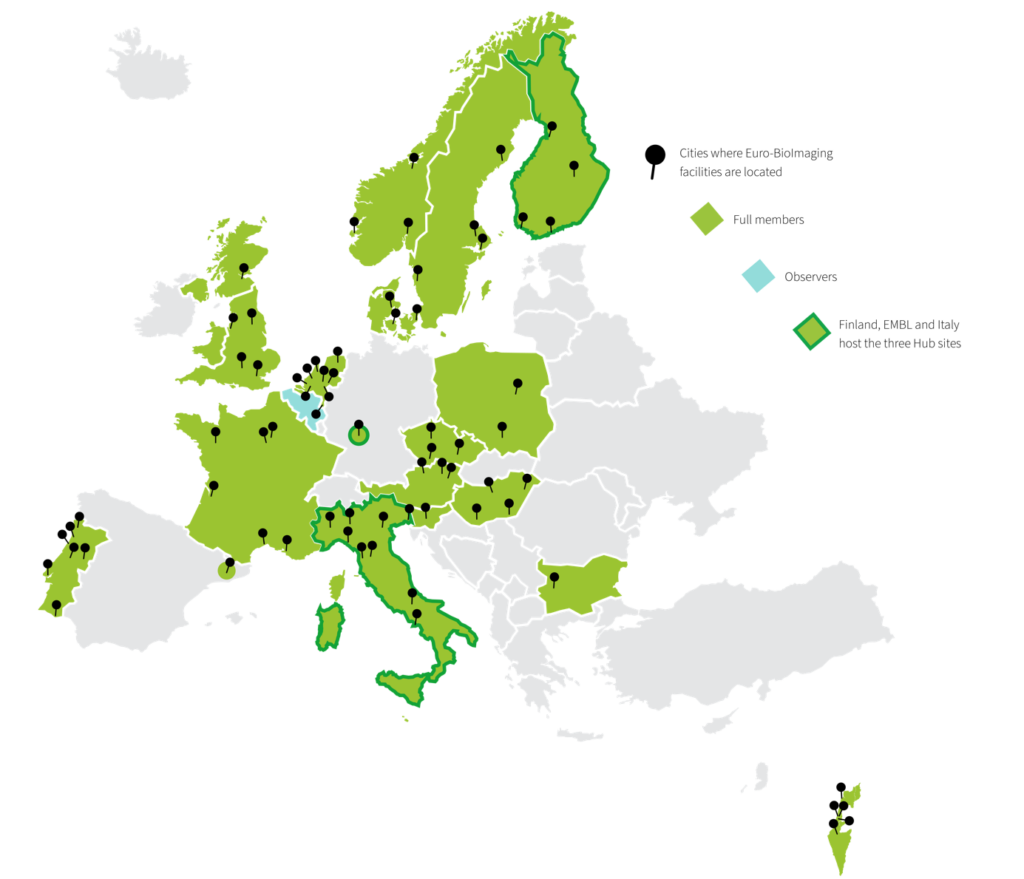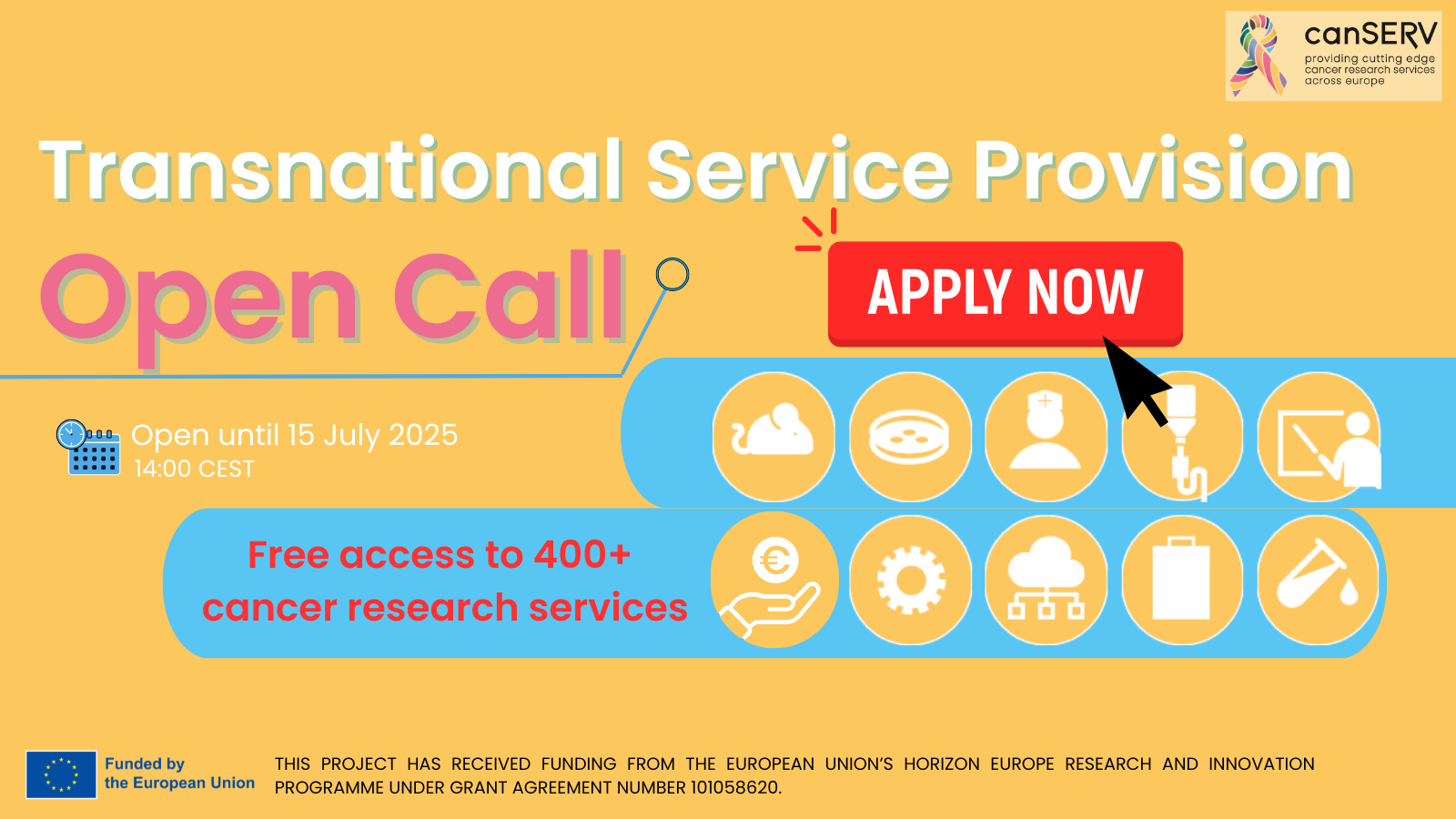
Euro-BioImaging welcomes two new Nodes and two Node Upgrades!
We are pleased to announce that the Euro-BioImaging family is growing! On October 12, 2022, two new Nodes and two Node upgrades were approved by the Euro-BioImaging Board. Our two new Nodes are located in the United Kingdom and Slovenia. In addition, the Cellular Imaging Hungary Node and the Molecular Imaging Italian Node applied for an upgrade, to bring a new facility on board. There are now 35 Nodes in the Euro-BioImaging family and 173 facilities!
We welcome these new Nodes with open arms and congratulate the national imaging communities that have come together to form these unified Nodes. Now all of our member countries have at least one Node, offering open access to national imaging facilities to users from around the world via Euro-BioImaging. Users will be able to apply for access to the new Nodes via Euro-BioImaging soon.
An ever-expanding infrastructure
The new Nodes and imaging facilities became part of Euro-BioImaging after a stringent review process by the Euro-BioImaging Scientific Advisory Board. As part of the Euro-BioImaging ERIC, the services and expertise provided by these facilities will be open to all scientists, regardless of their discipline or affiliation. We congratulate the successful new Nodes and upgraded Node and look forward to working with them to advance imaging and drive excellent research and innovation.
Learn about Upgraded Facilities
How do imaging facilities become Euro-BioImaging Nodes?

In the map, black pins represent cities where Euro-BioImaging facilities are located. Euro-BioImaging member countries are green, observing countries are light blue. Euro-BioImaging Hub site hosts are outlined in dark green (Finland, Italy and EMBL).
New Nodes
United Kingdom
The Euro-BioImaging UK Node is composed of seven complementary and interlinked technical sites, located at Francis Crick Institute (London), King's College London, OCTOPUS - Harwell Research Complex, Oxford Brookes University, University of Liverpool, University of York and Edinburgh Super Resolution Imaging Center (ESRIC). The seven sites host and operate state-of-the-art biological imaging instruments, all housed within world class research environments. The UK Node will make available a wide range of technologies including: correlative, multimodal, intravital, high-content and super-resolution microscopy to be applied to fundamental and translational research projects to image at molecular to cellular resolutions in single cells all the way through to 3D in vitro models and whole organisms. Support would be provided for the entire experimental pipeline including initial user consultation, experimental planning, full hands-on training, assistance with sample preparation, gathering highest quality imaging data and data analysis.
The UK Node will be coordinated by King's College London.
Slovenia
The SiMBION Node is a multimodal, multi-sited Node that brings together the Slovenian national research infrastructure resources in the field of bioimaging, distributed among several constitutive partners in Ljubljana, including the University of Ljubljana, Jozef Stefan Institute, National Institute of Chemistry, and the National Institute of Biology. As all sites are located in close proximity, the SiMBION Node focuses on multimodality imaging based on collaborative workflows between the different partners. The Node provides access to a wide range of biological and some biomedical imaging technologies, with a particular focus on high performance tissue elemental imaging platforms such as micro-PIXE, microXRF, as well as mass-spec associated techniques that include LA-ICPMS and MV-SIMS significantly expanding the Euro-BioImaging technology portfolio in this domain.
Upgraded Facilities
Hungary
The Cellular Imaging Hungary Node expanded via the inclusion of the NanoBioImaging and Advanced Microscopy Facility at the University of Pécs, as a flagship for super-resolution, specialized EM applications, 3D-SMD, and Stimulated Raman Microscopy. The addition of the new facility expands the available technologies, increases capacity and provides wider geographic coverage for the Hungarian Node.
Learn more: https://szkk.pte.hu/en/core_facilities/nano_bio_imaging_core_facility
Italy
Molecular Imaging Italian Node
The Molecular Imaging Italian Node now includes the Bio Check Up facility in Naples. This Upgrade improves the capabilities of the Node by bringing on board expertises in the fields of imaging analysis, imaging data management, radiomics, oncogenomics and the application of Artificial Intelligence procedures.
Learn more: https://biocheckup.net/en
How does an imaging facility become a Euro-BioImaging Node?
At regular intervals, Euro-BioImaging invites applications from imaging facilities located in Euro-BioImaging ERIC member countries via its Call for Nodes. In addition, existing Euro-BioImaging Nodes can apply for an upgrade to include new facilities within their Node structure.
Stringent requirements
In the Call for Nodes, applicants are evaluated by the leading international experts on our Scientific Advisory Board on a wide variety of factors, including:
-
Scientific and technical excellence
-
European and National significance
-
Technology maintenance and updates
-
Access and service package
-
Quality assurance
-
User training
-
Other technology-specific factors
Following successful evaluation and approval by the Board, the Nodes join the Euro-BioImaging family by signing service level agreements that outline the services to Euro-BioImaging users. This multi-step process guarantees a top-notch research infrastructure and a high-level of service for users.
More news from Euro-BioImaging


April 17, 2025
Ilaria Testa lights up EVOLVE Mentoring Masterclass on interdisciplinary science, SMART microscopy and team building
In a compelling EVOLVE Mentoring Masterclass hosted by Euro-BioImaging, Professor Ilaria Testa offered a multifaceted look into her scientific journey, from her interdisciplinary path…
